August 19th, 2014 by iisg_superadmin
Our summer internship program has wrapped up for another year. This year, seven students and recent graduates worked with our specialists on a broad range of issues, including AIS prevention, sediment remediation, and water supply planning. Erika Lower and Mark Krupa spent their internship working with Caitie McCoy, IISG’s social scientist.
“We did a little bit of everything this summer—from compiling reports on public perceptions of river cleanups in Detroit and Milwaukee to conducting interviews with community members to covering a day of outreach at Indiana’s Roxana Marsh” said Erika, a graduate from Virginia Tech who also interned last year with Virginia Sea Grant. “Working on so many diverse projects mean there was rarely a slow day at the office.”
Their favorite experiences came while onsite at Great Lakes Legacy Act sediment remediation projects. One such trip took them to the Upper Trenton Channel near Detroit to conduct a needs assessment that will help the project team tailor outreach products and messaging to those who use and visit the river.
“Our Detroit trip was definitely my favorite part,” said Mark, a University of Illinois alum. “We talked to over 30 different community members. It was great to see the site we had researched and really get to know the community, their concerns, and how they value the waterway.”
“How often do you get a chance to tour the site of a former oil refinery or conduct an interview from a powerboat in the middle of the Detroit River while watching the sun rise?” Erika added.
 These experiences further boosted their interest in the social science and highlighted its importance in environmental conservation.
These experiences further boosted their interest in the social science and highlighted its importance in environmental conservation.
“I’ve always been interested in the human dimensions of environmental science, but actually getting out into the field and talking with community members about their hopes and concerns illustrated just how complex finding the best solution to environmental issues can be,” said Erika.
“Before this internship, I didn’t realize how important it is to address local perceptions and concerns surrounding environmental cleanup projects,” said Mark. “Also, I hadn’t realized how much thought goes into designing outreach materials in order to ensure they attract an audience and effectively communicate the message.”
With their internship complete, Erika and Mark are turning their attention to graduate school. Mark will begin a Master’s in public health at Saint Louis University later this month. And Erika plans to complete graduate work in science communication or environmental social science.
August 15th, 2014 by iisg_superadmin
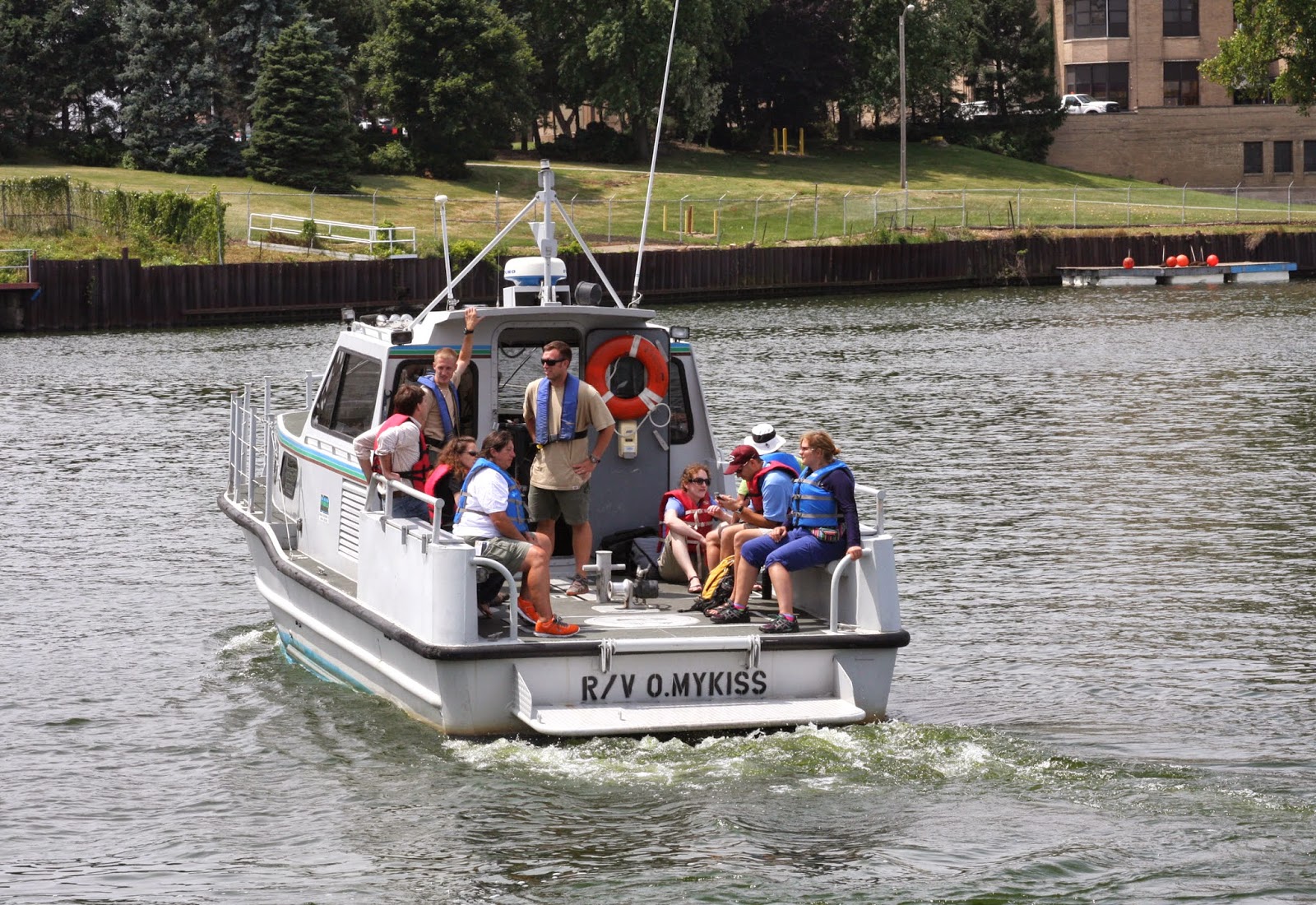 Fourteen teachers from Illinois and Indiana are hard at work developing new science lessons that incorporate real-time data from the Michigan City buoy after a training workshop held last week at Purdue North Central.
Fourteen teachers from Illinois and Indiana are hard at work developing new science lessons that incorporate real-time data from the Michigan City buoy after a training workshop held last week at Purdue North Central.
During the day-long workshop, IISG’s education and research teams, along with Purdue University’s Cary Troy
, introduced teachers to the environmental monitoring buoy, the data it collects, and how researchers are using the data to better understand the nearshore waters of Lake Michigan.
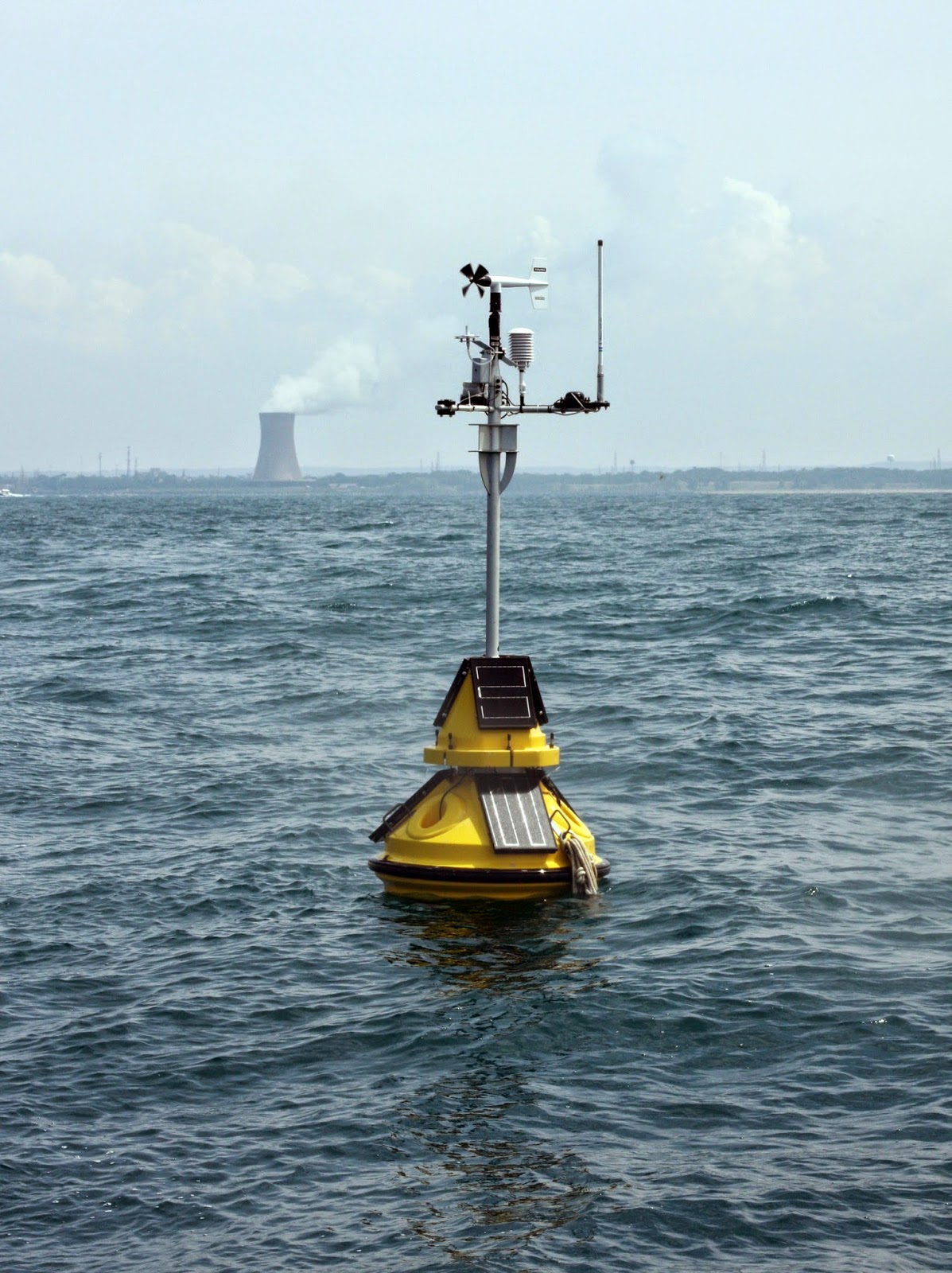 The highlight of the workshop for many was the boat ride four miles into Lake Michigan to see the buoy first-hand—in smaller groups due to the size of the boat. The trips also gave teachers the opportunity to talk more with researchers and staff from the Indiana Department of Natural Resources(DNR) about the buoy and other data collection methods used to monitor fisheries, understand lake dynamics, and improve water safety.
The highlight of the workshop for many was the boat ride four miles into Lake Michigan to see the buoy first-hand—in smaller groups due to the size of the boat. The trips also gave teachers the opportunity to talk more with researchers and staff from the Indiana Department of Natural Resources(DNR) about the buoy and other data collection methods used to monitor fisheries, understand lake dynamics, and improve water safety.
The teachers will work together to develop at least six curriculum activities that improve STEM education—science, technology, engineering, and math—and boost understanding of Great Lakes issues. These won’t be complete till early next year, but the teachers already have big ideas for how to integrate the buoy data into their classrooms.
Several hope to use information on wind speed and water currents to improve their weather units. Others plan to use data collected by the buoy’s thermistor chain, which measures temperatures at different depths, to pinpoint the likely habitats of specific fish species and determine whether invaders like Asian carp could make a home in Lake Michigan. Some even expressed interest in having students compare buoy data with environmental characteristics collected on land to better understand solar radiation and seasonal changes.
The final lesson plans will be available on the IISG website.
Funding for the workshop was provided in part by the Indiana DNR Lake Michigan Coastal Program. Special thanks to the DNR staff at the Michigan City field office for taking the participants out on the lake.
August 14th, 2014 by iisg_superadmin
In a world of streets, parking lots, and sidewalks, rain gardens can be a place for stormwater to go besides flowing into sewers and ultimately, nearby lakes and rivers. As it flows towards waterbodies, rainwater picks up pollutants like pesticides and fertilizers along the way. Precipitation that is absorbed into rain gardens recharges groundwater 30 percent more than even that of a typical lawn.
Besides that, rain gardens are pretty.
The Southern Lake Michigan Rain Garden Manual is a how-to for homeowners, landscape architects, city planners, and anyone interested in creating a garden to “absorb the storm.” This booklet is chock full of information–from choosing a location to designing and installing a rain garden to care and maintenance. You can find a plant list, including those suited for shade and clay soils, and sample garden plans.
This publication is adapted from the Vermont Rain Garden Manual for the southern Lake Michigan region. The manual was developed through Lawn to Lake, which is a collaborative program to protect water resources in the Great Lakes region by promoting healthy lawn and landscape practices.
**The Red Oak Rain Garden at University of Illinois Urbana-Champaign
August 5th, 2014 by iisg_superadmin
Believe it or not, Indiana is a prime location for aquaculture industries due to its rich supply of raw materials for fish food and access to large markets. And as fish continue to be harvested from oceans and other water bodies at unsustainable rates, the role of aquaculture grows ever more vital.
This work has led to economic development not just in the aquaculture industry but in a variety of other sectors as well. Research has revealed that farm sales of aquaculture products in Indiana reached about $15 million in 2013, a nearly five-fold increase over 2005. Fish farming in the state supports 280 jobs, 169 directly in the aquaculture industry. Aquaculture generates $3.7 million labor income and $19.5 million added value. The industry output is valued at $23.6 million for a total value of $38 million with other supporting industries.
To learn more about how IISG is empowering communities and individuals to strengthen local environments and economies, check out our 2013 program impacts.
August 4th, 2014 by iisg_superadmin
It’s been a few months since IISG-sponsored graduate students Sara Paver and Katherine Touzinsky began their Knauss fellowships. We were curious to hear about their experiences so far and thought you might be too. We heard from Sara a few weeks ago. This week we check-in with Katherine, an alum of Purdue University who is spending the year with the US Army Corps of Engineers.
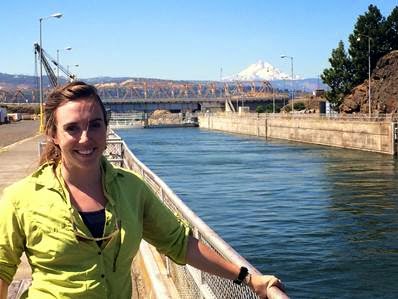 “This year has been overwhelming, in a good way. I never thought I would find myself working for the US Army Corps of Engineers. That being said, I also can’t imagine a better fit for my Knauss Fellowship. I went to Purdue University as a fellow in the Ecological Sciences and Engineering (ESE) interdisciplinary program because, as an ecologist, I thought it would be valuable to gain insight into the way engineers and other scientists think. In addition to the courses and thesis work I completed in the Forestry Department at Purdue, the supplementary education I received through ESE was eye opening and fascinating. I loved the practice of big-picture thinking, and this year with the Corps has solidified that love. It has prompted intellectual growth and self-realization. I’m moving on from studying human-ecological invasive species interaction to thinking about nationwide systems like marine transportation, flood risk management, and how to prepare for an uncertain future.
“This year has been overwhelming, in a good way. I never thought I would find myself working for the US Army Corps of Engineers. That being said, I also can’t imagine a better fit for my Knauss Fellowship. I went to Purdue University as a fellow in the Ecological Sciences and Engineering (ESE) interdisciplinary program because, as an ecologist, I thought it would be valuable to gain insight into the way engineers and other scientists think. In addition to the courses and thesis work I completed in the Forestry Department at Purdue, the supplementary education I received through ESE was eye opening and fascinating. I loved the practice of big-picture thinking, and this year with the Corps has solidified that love. It has prompted intellectual growth and self-realization. I’m moving on from studying human-ecological invasive species interaction to thinking about nationwide systems like marine transportation, flood risk management, and how to prepare for an uncertain future.
Living in Washington, D.C. has been an amazing experience in itself. Not only is my job exciting, but I moved out to D.C. with 50 other Knauss fellows—a built-in network of brilliant and ambitious people who have a true passion for the environment and for communicating science to those outside of academia. It has been so exciting and valuable to get to know the other fellows because I know they are people who will stay in my network the rest of my life. When else do you get to move to a new city with 50 new friends to explore it with?
In the past six months, I have spent a total of 11 weeks on the road—touring parts of our nation’s largest engineering projects that the public never sees, working on introducing new technologies to district projects, helping to facilitate workshops and conferences with environmentalists, regulatory personnel, and project directors from around the world, and learning about the staggering amount of resources and manpower involved in managing our waterway systems.
I am currently writing this post in a coffee shop outside of Portland, Oregon (yes, the coffee is great). I spent the past two days touring both the Bonneville Dam and The Dalles on the Columbia River with five engineers from the Engineering Research and Development Center. We worked with the dam operators on addressing some research and development (R&D) solutions to issues they have at their project sites—from fish ladders, to corrosion, to wear and tear from boats and barges coming in and out of the navigation locks. R&D can address all of these problems, and big-picture thinking while planning R&D projects is the key to a sustainable future. The Portland District projects were breathtaking—two of the largest power generating dams in the country.
August and September will bring trips to district projects in California and Hawaii and conferences in the Netherlands and Greece. I’m looking forward to what the next six months will bring. I truly can’t imagine a more exciting year.”
**Photo: Katherine standing near The Dalles navigation lock with Oregon’s Mt. Hood in the background.
July 28th, 2014 by iisg_superadmin
 Scientists and engineers are working together to design a clean-up plan for Michigan’s Upper Trenton Channel, where high concentrations of historic pollutants pose a threat to aquatic life and public health. The process began about a year ago with a feasibility study. In January, local residents had a chance to weigh-in on an early draft of the plan. And in the coming years, this Great Lakes Legacy Act project could remove or cap around 240,000 cubic yards of contaminated sediment.
Scientists and engineers are working together to design a clean-up plan for Michigan’s Upper Trenton Channel, where high concentrations of historic pollutants pose a threat to aquatic life and public health. The process began about a year ago with a feasibility study. In January, local residents had a chance to weigh-in on an early draft of the plan. And in the coming years, this Great Lakes Legacy Act project could remove or cap around 240,000 cubic yards of contaminated sediment.
Just as important as the clean-up effort itself, is ensuring that local communities and other key stakeholders understand the project and its goals. But before they can begin public outreach, project partners have to understand and appreciate the role the channel and nearby Detroit River play in the communities.
 That is where IISG’s social scientist Caitie McCoy and her interns Erika Lower and Mark Krupa come in. The three were in Michigan earlier this month to conduct a needs assessment that will help the project team tailor outreach products and messaging to those who use and visit the river.
That is where IISG’s social scientist Caitie McCoy and her interns Erika Lower and Mark Krupa come in. The three were in Michigan earlier this month to conduct a needs assessment that will help the project team tailor outreach products and messaging to those who use and visit the river.
They interviewed around 35 people with diverse backgrounds—everyone from area residents to city planners to members of boating associations—to learn more about their perceptions of the channel and river. The final results of the study won’t be available for a few months, but the interviews have already given Caitie, Erika, and Mark a better understanding of the interests and concerns surrounding this popular recreation site.
“One interesting thing we learned was that the safety of the channel and river during dredging is of prime importance to the community,” said Caitie. “This is a fast flowing channel, and we will need to explain the science and engineering behind what keeps stirred up sediment from flowing downstream during the project—in terms that everyone can understand.”
 An impromptu trip on the channel also gave Caitie, Erika, and Mark deeper insight into how the community uses the channel and river. The trip—which set off bright and early on the 16th—was led by the Wyandotte Rowing Club. Later that night, the group took to the water once again with one of the residents they interviewed.
An impromptu trip on the channel also gave Caitie, Erika, and Mark deeper insight into how the community uses the channel and river. The trip—which set off bright and early on the 16th—was led by the Wyandotte Rowing Club. Later that night, the group took to the water once again with one of the residents they interviewed.
Similar studies for the Sheboygan River and St. Louis River Areas of Concern have already helped shape outreach efforts there and allowed project partners to gauge changes in community perceptions at the end of a clean-up project.
The Upper Trenton Channel, which sits about 20 miles south of Detroit, is part of the Detroit River AOC. Project partners include Michigan Sea Grant, Friends of the Detroit River, the Detroit River Public Advisory Council, the Michigan Department of Environmental Quality, the Michigan Department of Community Health, and the U.S. EPA.
July 24th, 2014 by iisg_superadmin
It’s been a few months since IISG-sponsored graduate students Sara Paver and Katherine Touzinsky began their Knauss fellowships. We were curious to hear about their experiences so far and thought you might be too. First up is Sara, an alum of the University of Illinois at Urbana-Champaign who is spending the year at the National Science Foundation Division of Ocean Sciences.
 “I have officially reached the halfway point in my fellowship. I am having a wonderful experience, and the time has passed unbelievably quickly. I would consider the best aspects of being a Knauss Fellow to be (in no particular order) the abundance and breadth of opportunities—no two fellowship experiences are the same, and there is quite a bit of flexibility to tailor your experiences to your interests—and the awesome people you have the opportunity to interact with along the way. I really enjoy working with my colleagues at the National Science Foundation (NSF) and spending time with the other fellows.
“I have officially reached the halfway point in my fellowship. I am having a wonderful experience, and the time has passed unbelievably quickly. I would consider the best aspects of being a Knauss Fellow to be (in no particular order) the abundance and breadth of opportunities—no two fellowship experiences are the same, and there is quite a bit of flexibility to tailor your experiences to your interests—and the awesome people you have the opportunity to interact with along the way. I really enjoy working with my colleagues at the National Science Foundation (NSF) and spending time with the other fellows.
My fellowship placement is in the Division of Ocean Sciences, where I have been working to facilitate the review of grant proposals submitted to the Coastal Science, Engineering, and Education for Sustainability (Coastal SEES) program and the Biological Oceanography core program. I submitted a few grants to NSF as a graduate student, and it has been very illuminating to see the grant review process from the other side. I especially enjoy meeting and interacting with the scientists who serve on panels.
My position at NSF has also enabled me to improve my science communication skills. I revised the 2014 Coastal SEES award abstracts to make them accessible to a non-specialist audience. I have also been writing NSF Highlights to describe the broader impacts of research accomplishments funded by the NSF Biological Oceanography program.
 Outside of my work at NSF, I have been using my non-stipend fellowship funds to travel. I recently returned from Waterville Valley, NH, where I attended my first Gordon Research Conference. The theme of the conference was “Ocean Global Change Biology: Interactive Effects of Multiple Global Change Variables.” In May, I had the opportunity to travel to the Bigelow Laboratory for Ocean Sciences in East Boothbay, ME to participate in an Ocean Carbon and Biogeochemistry scoping workshop focused on improving predictive biogeochemical models through single cell-based analyses of marine plankton. These experiences provided me with opportunities to network with researchers—including scientists whose work I cited in my dissertation and had specifically hoped to meet—as well as the chance to watch collaborations form and new research areas emerge.
Outside of my work at NSF, I have been using my non-stipend fellowship funds to travel. I recently returned from Waterville Valley, NH, where I attended my first Gordon Research Conference. The theme of the conference was “Ocean Global Change Biology: Interactive Effects of Multiple Global Change Variables.” In May, I had the opportunity to travel to the Bigelow Laboratory for Ocean Sciences in East Boothbay, ME to participate in an Ocean Carbon and Biogeochemistry scoping workshop focused on improving predictive biogeochemical models through single cell-based analyses of marine plankton. These experiences provided me with opportunities to network with researchers—including scientists whose work I cited in my dissertation and had specifically hoped to meet—as well as the chance to watch collaborations form and new research areas emerge.
The Knauss Fellowship has also provided me with unique extra-curricular experiences. For example, I recently viewed Saturn through a telescope at the Naval Observatory during a special tour for Knauss Fellows set up by Justine Kimball, the fellow currently serving as policy liaison to the Oceanographer of the Navy. Earlier in the year, I went bowling with my NSF colleagues at the Truman Bowling Alley in the basement of the Eisenhower Executive Office Building, which is near the White House. I also went on a road trip with some of the other Knauss Fellows, including IISG fellow Katherine Touzinsky, to Horn Point Laboratory on the Eastern Shore of Maryland, where we completed an Integration and ApplicationNetwork (IAN) science communication course.
I am excited to see what is in store for me in the next six months and would encourage anyone interested in the intersection of science and policy to seriously consider applying to be a Knauss Fellow.”
Be sure to check back here next week to hear how things are going for Katherine Touzinsky.
**Photo A: Sara (left) and three other Knauss Fellows take a break from Capital Hill Ocean Week events to pose for a photo.
Photo B: Sara enjoying her visit to East Boothbay, ME.
July 23rd, 2014 by iisg_superadmin
We are excited to announce that Joel Davenport has joined the team as IISG’s graphic arts specialist. Joel helps shape the look of the program and works closely with the communication team and program specialists to produce our newsletter, flyers, displays, and other print and online outreach materials.
Joel brings seven years of experience in publication design, organizational branding, illustration, and web design. He has a Bachelor’s degree in communication with an emphasis on marketing.
July 22nd, 2014 by iisg_superadmin
A physical barrier to stop Asian carp from making their way into Lake Michigan
won’t be happening any time soon, but there are other ways to reduce the risks of these fish becoming established in the Great Lakes. From the latest issue of IISG’s The HELM:
The men behind a new fish processing plant in Illinois aren’t veterans of the fishing industry. They are a lawyer, alloy company owner, and restaurant builder who saw Asian carp jumping in the Mississippi River and thought, “There must be something we can do with these things.”
That thought became a reality this April when American Heartland Fish Products opened its doors in Grafton, IL, a small town near the confluence of the Mississippi and Illinois rivers. The plant uses a unique production process to turn Asian carp into fish and bone meal and Omega 3 oils. The high-protein meals are primarily sold to animal feed producers. Their biggest seller, Omega 3 oil, is used for everything from cosmetics to dietary supplements.
“There is a demand for these products that never quits,” said Ben Allen, who co-owns American Heartland Fish Products with Gray Magee and Bryan Lebeau. “I have been involved in a lot of businesses, but never one where there is such a demand for the product.”
Read more.
 These experiences further boosted their interest in the social science and highlighted its importance in environmental conservation.
These experiences further boosted their interest in the social science and highlighted its importance in environmental conservation. 

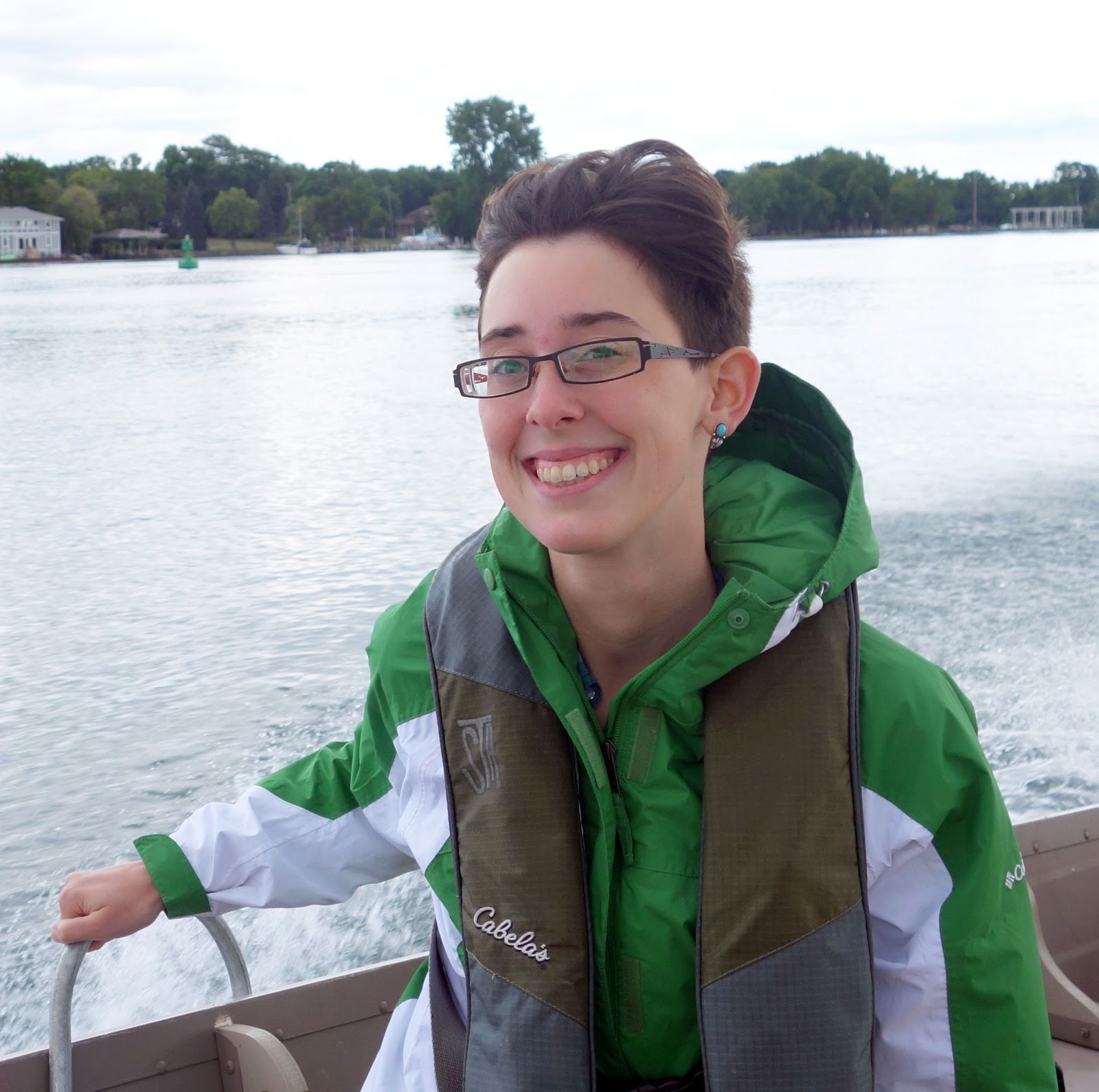

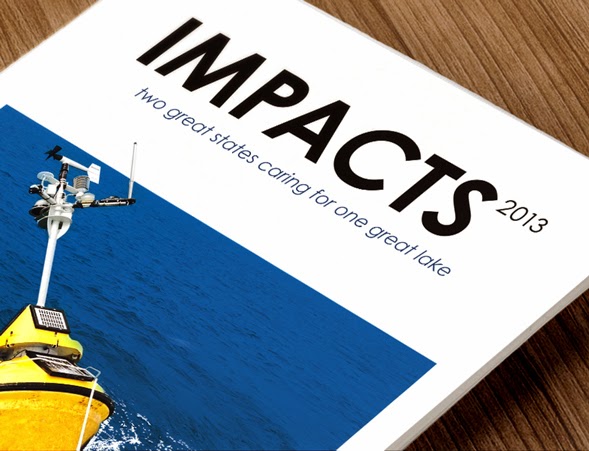







.jpg)



